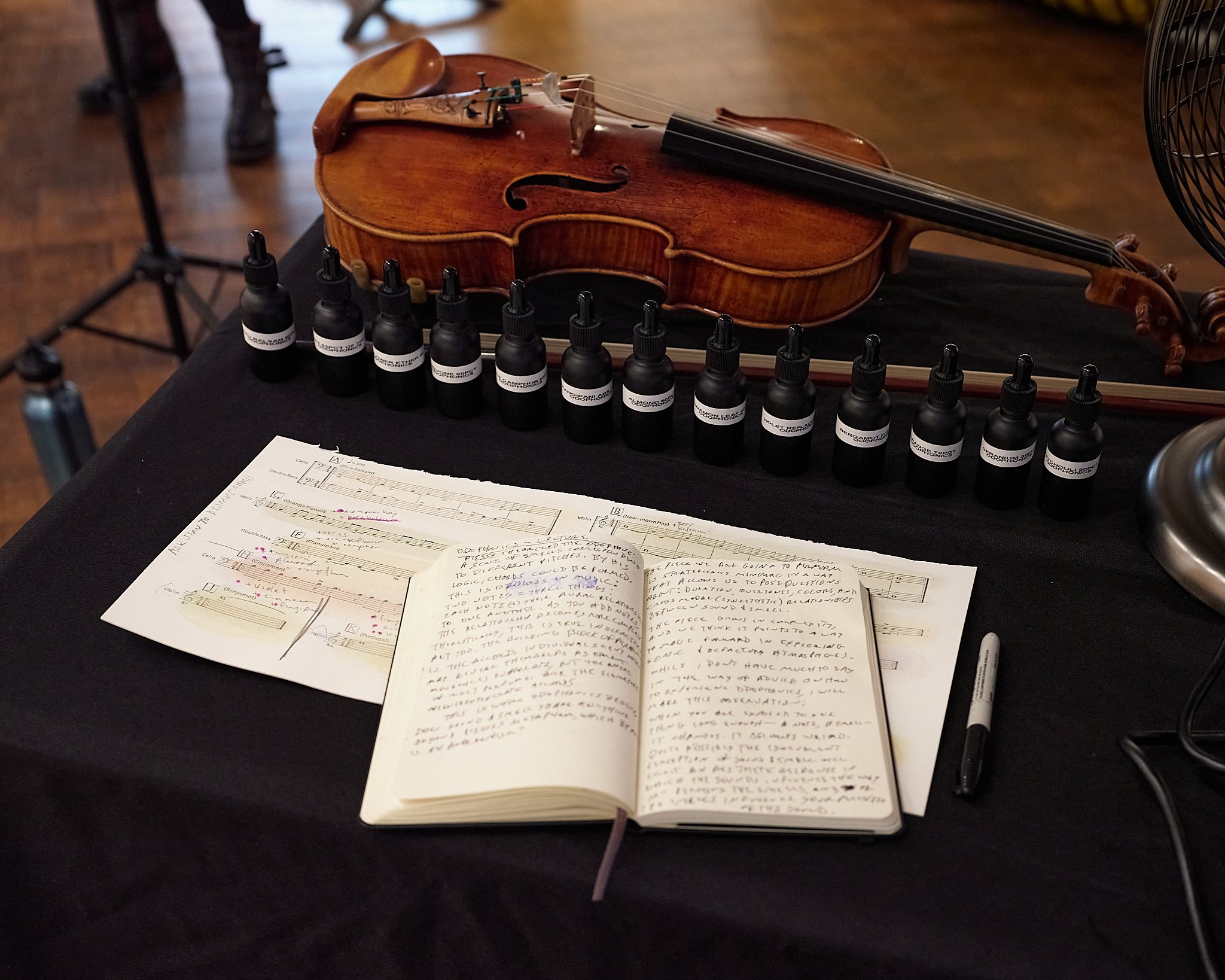Odophonics: A performance for scent and chamber ensemble
Brian Goeltzenleuchter & Sean Francis Conway, Odophonics: A performance for scent and chamber ensemble, video documentation from performance at San Diego Art Institute, May 14, 2016
Brian Goeltzenleuchter & Sean Francis Conway, Odophonics: A performance for scent and chamber ensemble, documentation from performance at Craft Contemporary, October 28, 2023
Images courtesy of Jeffrey Robins.
Brian Goeltzenleuchter, A Sensory Score for Odophonics, watercolor and rubber-based ink on cover stock (1 of 11 uniquely painted relief prints), 2022
“Scents, like sounds, appear to influence the olfactory nerve in certain degrees. There is, as it were, an octave of colors like an octave in music; certain odors coincide, like the keys of an instrument. Such as almond, vanilla and orange blossom blend together, each producing different degrees of a nearly similar expression.”
Program Notes
Septimus Piesse, a 19th century French chemist and perfumer, introduced a vocabulary to talk about smells that made use of musical metaphors. Words such as ‘notes’ (individual smells), ‘chords’ (combinations of notes), ‘harmony,’ and ‘progression’ are still used today in fragrance industries. In 1858 Piesse created an ‘Odophone,’ a literal scale of smells corresponding to different pitches in Western musical notation. By his own logic, scent chords could be formed. Piesse’s logic somewhat corresponded to the scientific understanding of smell in his day, which posited that smell, like sound, was perceived by frequency and vibration. That logic has since been debunked, rendering Piesse’s Odophone little more than a historical anachronism. That is, unless one is dubious of the scientific evidence that supports this conviction. Or, unless one finds value in mining anachronisms as a way to move culture forward.
Odophonics, a performance for scent and musicians, is an ongoing collaboration between Sean Francis Conway and Brian Goeltzenleuchter. The performance is a jumping off point to explore Piesse's Odophone to test new propositions about how one experiences smell, particularly in relation to sound.
The musical component in Odophonics uses Minimalist structures such as consonant harmony, drones and polyrhythms to create gradual chord transformations. All the notes in this ambient soundscape can be found on Piesse’s scale. As the performers play the composition, Goeltzenleuchter releases the corresponding scent notes in time. Each scent is faithfully derived from Piesse’s scale. Together, the musical and olfactory harmonics gradually shift. Specific to the performance is the question: What relationships exist between concurrent perceptions of smell and sound?









